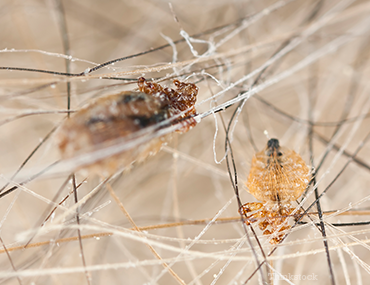
In the last few weeks I have seen two different television family sitcoms centered on the consequences of having a small child come home from school infested with lice. It seems to be a popular comedic topic, and it’s not uncommon, but the reality is not so funny.
Lice facts
According to the Centers for Disease Control and Prevention, “Reliable data on how many people get head lice each year in the United States is not available; however, an estimated 6 million to 12 million infestations occur each year in the U.S. among children 3 to 11 years of age.” On television and in reality, lice spread primarily through contact with an already infected individual, although less commonly, transmission can occur via fomites or objects that have been in recent contact with an infected individual (beddings, combs, brushes, etc.) Since animals get lice too, what does this all mean to you and your pet?
The good news is that lice are very host specific. That means that dog and cat lice are fairly restricted parasites. They are not shared between species and are not transmitted from pets to people. If your child has lice you need not look to your dog or cat as the source, and if your pet has lice you do not need to worry about your family members ending up infected too.
What are lice?
Lice are very small insects that are about the same size as fleas but are flattened top to bottom like a pancake while fleas are flat side to side. Lice do not have wings so they cannot fly nor can they jump around like fleas. There are two different types of lice based on the way that they feed: One group chews dead skin cells and other debris, the other group sucks blood, fluids or body oils.
 What diseases can lice cause?
What diseases can lice cause?
Certainly lice can be extremely irritating--causing the host dog, cat (or person) to be very agitated and itchy, but usually infested animals don’t react to the lice at all. In those animals that do suffer reactions, the response tends to be intense scratching or chewing causing hair loss and skin irritations. Irritation can ultimately lead to secondary bacterial infections in the traumatized skin and needs to be treated appropriately with anti-inflammatory medications and/or antibiotics. However, unlike other blood-sucking insects, like mosquitoes and ticks, lice do not transmit serious blood-borne diseases. Only one type of chewing lice, the Trichodectes canis, carries the risk of transmitting tapeworms (just as fleas do). In this case, your dog would need to swallow an infected louse to be infected.
How do you get rid of lice?
If your veterinarian has diagnosed your pet has having lice (skin irritations and/or tapeworms aside) you probably want to rid them of the parasite and keep it from coming back. Fortunately, the Companion Animal Parasite Council offers many treatment options.
The good the bad and the ugly truth about lice
Lice are ugly, disturbing looking creatures. And yes, in some cases they can cause significant distress, dermatitis, and discomfort. But in general, they are more of an annoyance than anything else. They are easily treated and controlled, rarely transmit disease, and won’t jump around between hosts.
If you have any questions or concerns, you should always visit or call your veterinarian -- they are your best resource to ensure the health and well-being of your pets.
